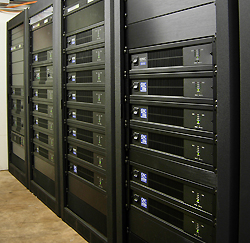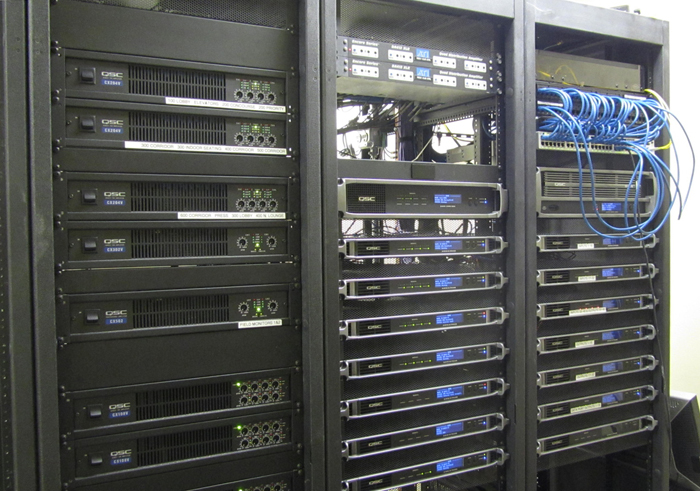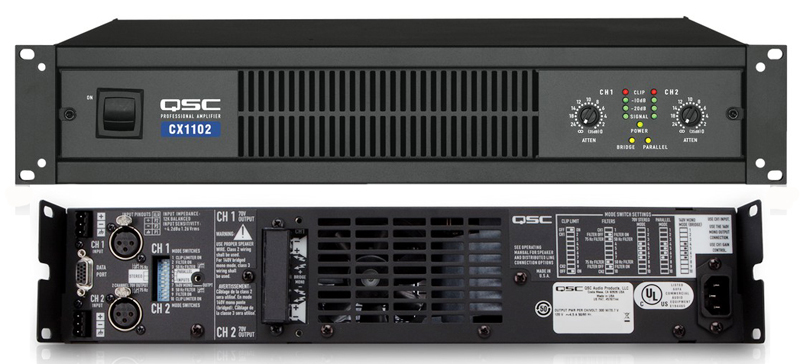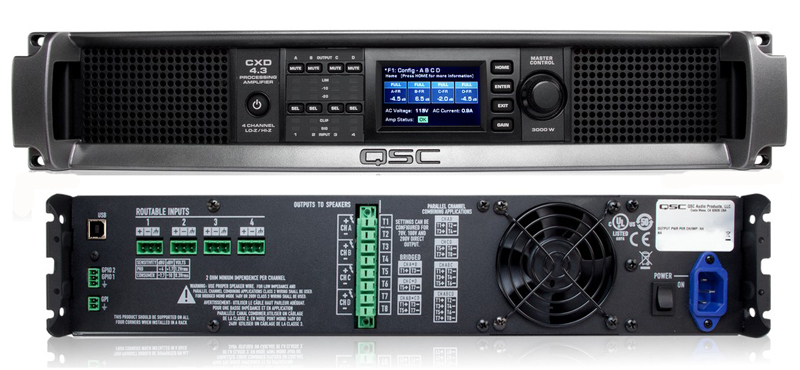With all of the new installation power amplifiers coming out on in the market—each with its own unique feature set—how is an integrator make a wise choice in order to maximize profit and minimize system complexity, customer callbacks, and overhead?
Pressures to reduce environmental footprint, the dwindling of rack spaces, the inclusion of IT gear, the mix of high performance audio with background and paging systems, interest in the total long term costs of ownership have driven some substantial changes in the market.
What are some of the trends system integrators and equipment manufacturers should be paying attention to?
Space is money. Any more, it seems that the audio system is given less and less space in integrator racks. With the necessary IT, video, and building automation demands on rack space, this is no surprise. Few if any installs have enough room for racks and racks of power amplification.
It is unlikely that this trend will stop any time soon. In the realm of audio amplification the trend is driving manufacturers of audio equipment to increase both power and channel densities. More channels, more power, less space.
Heat is money. Everyone knows it – heat kills electronics. In the old days, no one batted an eye about adding an extra ton or two of AC to an equipment closet in order to keep the power amplifiers cool. These days, there are many factors that the integrator has to balance. Green building standards, soaring costs of electricity, limited space, LEED credits, and the total cost of ownership (amortized cost of the product plus all of the long term electrical and HVAC cooling costs).
The industry has had to respond to this trend. Amplifiers in particular have had to dramatically change internally over the years. Linear power supplies and linear amplifiers gave way to switch mode power supplies and linear amplifiers, which have recently given way in many cases to switch mode power supplies and amplifiers – also known as class-D amplification.
A more detailed example can be very eye opening. Let’s compare the heat losses of two power amplifiers, both from QSC. The first, a CX1102, is a high-power installation amplifier that utilizes a switch mode power supply followed by a linear amplifier.
The second, a CXD4.3, is one of the company’s newest models, offering both a switch mode power supply and a class-D output. Both amplifiers have approximately the same output power per channel.
Let’s start with idle losses (as published by QSC) – how much heat the amp puts out when it is simply on and not passing audio. The CX1102 has an idle heat loss of about 195 BTU/hr whereas CXD4.3 has an idle heat loss of 286 BTU/hr. Now, at first blush you may think that the CXD4.3 is worse – until you take into account that there are four amplifier channels versus the CX1102’s two.
If we compare apples to apples, we would have to double the number of CX1102’s in the system. This equates to about 390 BTU/hr for two CX1102’s – an additional idle loss of 104 BTU/hr.
Things get even more interesting when the system is operating. At 1/8th power into 8 ohms, that same pair of CX1102 amplifiers will generate 2390 BTU/hr compared to a single CXD4.3 which generates 811 BTU/hr – a full 1579 BTU/hr less. That means for every CXD installed you can spec 0.13 tons less of refrigeration. That can add up quickly in infrastructure and total cost of ownership.
Time is money – voltage options. As the systems integration business has expanded, many contractors are now bidding international jobs, or have locations and partnerships that span the globe. In the “old days,” the contractor had to pour over a catalog and try to make sure that the correct mains voltage units were purchased.
As more manufacturers have migrated toward switch mode power supplies, it has become much more common to see “universal” or “one world” power supplies. These power supplies are designed in such a way as to allow the integrator to buy one model and be able to use that one model anywhere in the world without having to fuss with switches or other such interventions.
At the least, this reduces the number of products an integrator has to know by three times! No longer do you need 100-volt, 120-volt, and 240-volt models to cover the globe.
























